There is no doubt that clocks are one of the greatest inventions ever made. The desire to understand the days and nights is as old as existence itself. However, it wasn’t until the 14th century that large clocks began to surface on the tops of towering buildings and other public places.
But this super-helpful machine hasn’t always been around. Before they came on the scene, humans had devised other methods for telling time. The evolution began from very crude ways, slowly but steadily, till we got to where we are today. Now we have time-telling devices on our walls, wrists, and the palms of our hands.
Throughout the centuries, we have used water, sundials, and several other brilliant techniques to measure time. We will trace the inventions and development of these systems through the contributions of the ancient Greeks, Romans, and Egyptians.
We will focus on how our ancestors were able to improve their precision and accuracy through the ages, and down to our present time. But before we examine these fascinating technologies, we will discover the needs that informed man’s desire to keep track of time in the first place.
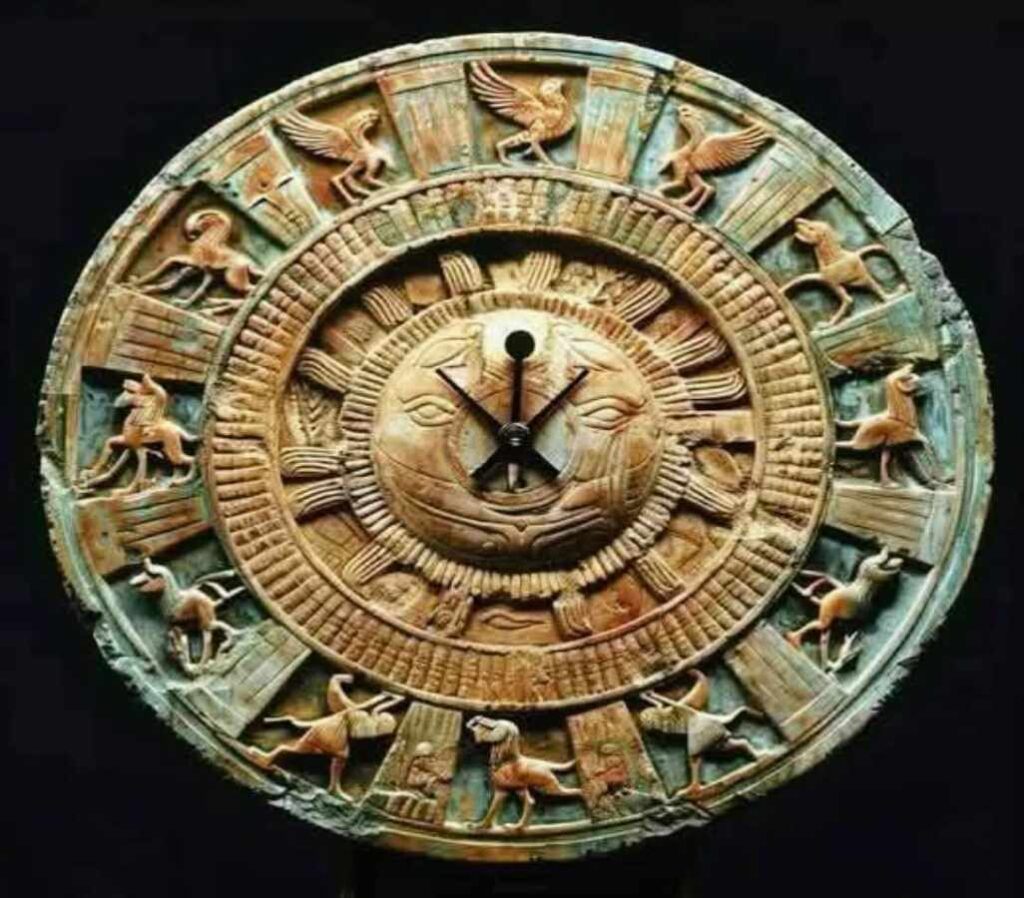
Why is Timekeeping Important?
In modern times, there has been a heavy reliance on timing and scheduling. This dependence is a direct result of the fast-paced world we now live in. Truly, the way we live has continued to change over the past decades, making timekeeping even more crucial.
These days there are more activities to perform and deadlines to meet. Many corporate systems depend heavily on timing to actualize their goals and objectives. Hence, the need to structure schedules in a way that will ensure maximum productivity.
Despite the more gruelling demands of our present time, our ancestors also had these and many more reasons for keeping time. Archaeological evidence has pointed to several factors that influenced the search for timekeeping in the early days. They include the need to organize communal and public events.
Our ancestors also needed timekeeping for scheduling the shipping of goods and services and other commercial activities. Agricultural factors also played a major role as farmers needed to measure planting and harvest cycles.
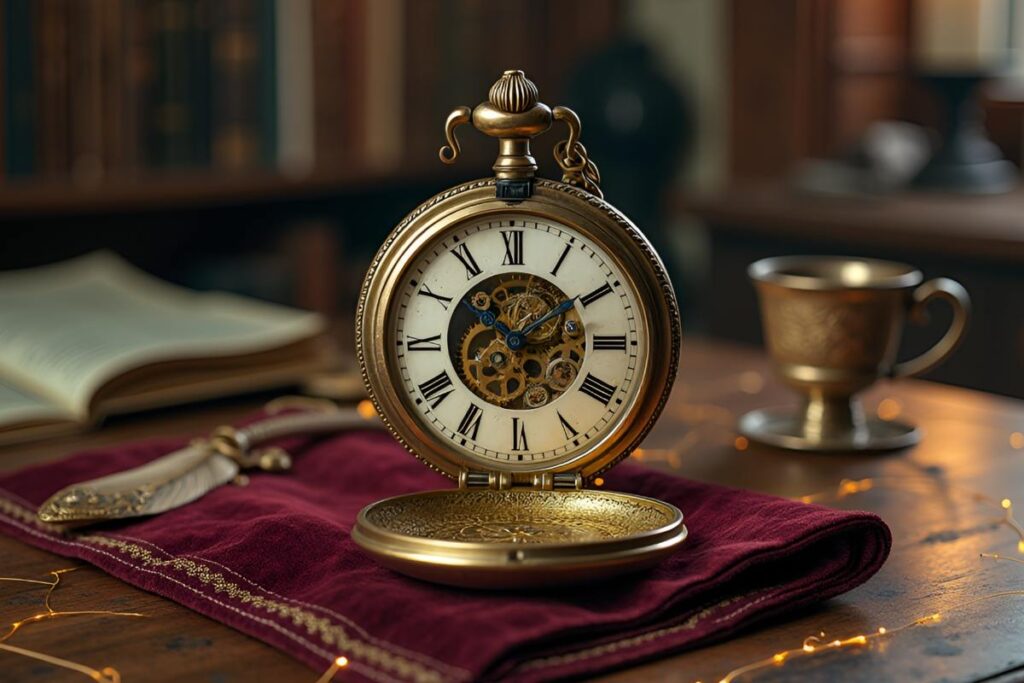
To effectively count cycles of night and day into months and years, despite the intrusion of special events such as eclipses, they needed to measure time.
Who Invented the Measurement of Time?
Millennia before mankind invented artificial lighting, we depended heavily on celestial bodie,s especially the moon. Our ancestors monitored the rising and setting of the sun as well as the cycles of the moon. The observations drawn from this study helped them invent the calendar.
They were also, through the study of celestial patterns, able to predict seasons. While some sections of ancient civilizations, such as the early Romans, based their calendars on the patterns of the sun, others focused on the moon.
The Egyptians went a step further by studying the intervals of darkness. From this, they developed a system of hours whose duration varied along with the seasons. They noticed that during the sunny periods, there were more hours of light than darkness. In contrast, during the winter days, there are more hours of darkness than light.
The Egyptians, alongside the Babylonians, devised the duodecimal system for measuring time. This system calculates time based on the number 12. This gave birth to our current calendar division of the year into 12 months, the daily division of 24 hours, the hourly division of 60 minutes, and the minute division of 60 seconds.
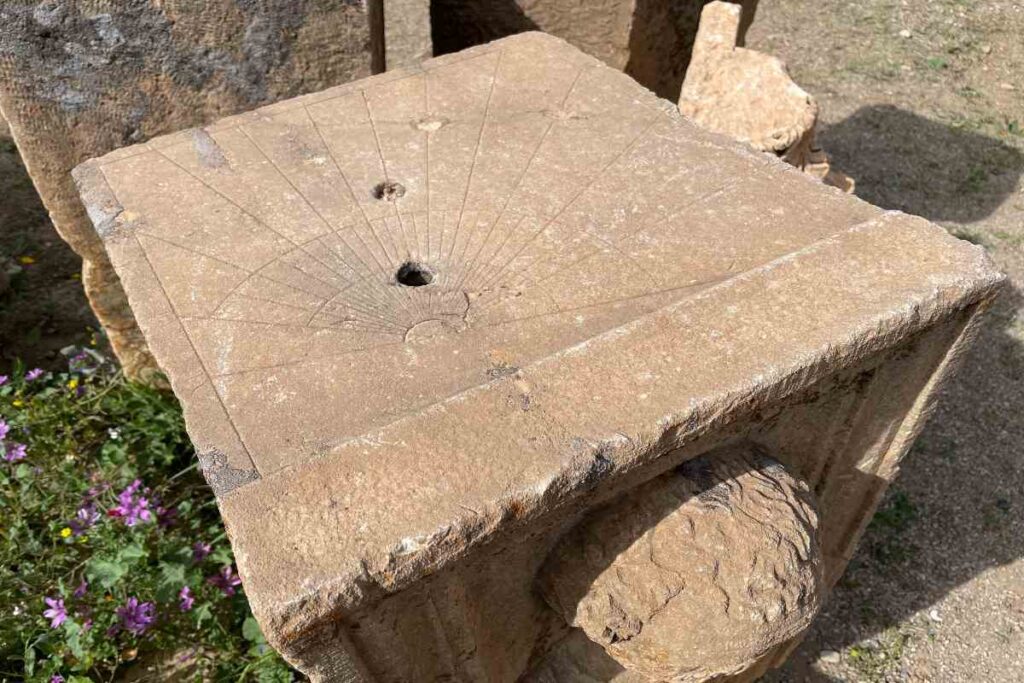
But when it came to the first standard time-measuring devices, all the credit goes to one section of ancient civilization. The earliest records point to the Egyptians as the inventors of time measurement. They invented timekeeping instruments such as the sundial more than 3,500 years ago.
Early Timekeeping Devices
Before the advent of the water clocks and sundials, there were other crude methods and instruments for telling time. Sadly, these earlier instruments weren’t able to survive the archeological test of time. This lack of material evidence has made it more difficult to determine when time measurements actually began.
For example, humans once mounted upright sticks on the ground, whose shadow directions were used to know the time. One of these sticks was called a gnomon. The shadow cast from the gnomon (which could also be a big pillar) varied in length from hour to hour. It was these variations in length that were used to determine the time.
Even before the use of instruments, our ancestors observed the position of the sun from sunrise to sunset to tell what time of day it was.
Also, humans observed the altitude of the sun and drew calendars from their findings. These calendars, together with these earliest tools, haven’t survived through the times.
The Sundial (About 1500 BCE)
When the sundial came on the scen,e it was already about 1500 BCE. It was the earliest standard timekeeping instrument and an improvement on the earlier used upright stick. The earliest sundial that we’ve found is an Egyptian green schist shadow device from about the 8th century.
The sundial comprised a crosspiece, a straight base with a scale which was divided into six parts. Later on, it was divided into 12. The shadow of the crosspiece reflected on the base to show what time it was. Reports showed that the Egyptians still used devices similar to this in the early modern era.
But our ancestors weren’t satisfied with that sundial. They created a variation of the sundial known as the hemispherical sundial. Specifically, it was designed by Aristarchus of Samos, a Greek Astronomer at about 280 BCE.
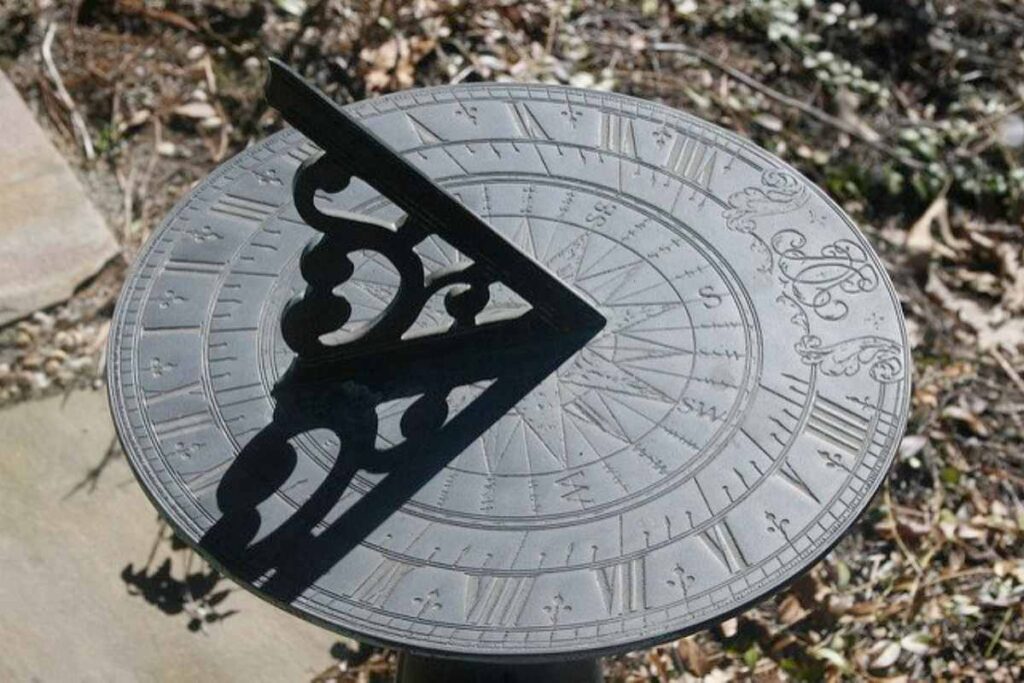
The hemispherical sundial was made of a cube-shaped block from which a hemispherical portion was carved away. This left a caldron-shaped instrument with a concave dial plate. It had a pointer or a gnomon (pointing toward the north) which indicated the time.
Rays from the sun fell on the gnomon and cast a shadow on the concave plate, which could be made of bronze or even wood. The inside of the plate had divisions that indicated hours. It also had 13 lines that expressed 24 subseasons. The length and position of the shadow described the seasons.
The hemispherical sundial remained in use for centuries. Reports from the work of another notable astronomer also showed that it remained relevant till the 10th century. Afterward, the Greeks went ahead to design even more complex sundials. The Arabs also showed great interest in the development of sundials as it helped indicate the hour of prayer for their predominant Islamic religion.
Even after the 14th century invention of the mechanical clocks, sundials remained relevant. If they weren’t used to tell time, they were useful for resetting the mechanical time machines.
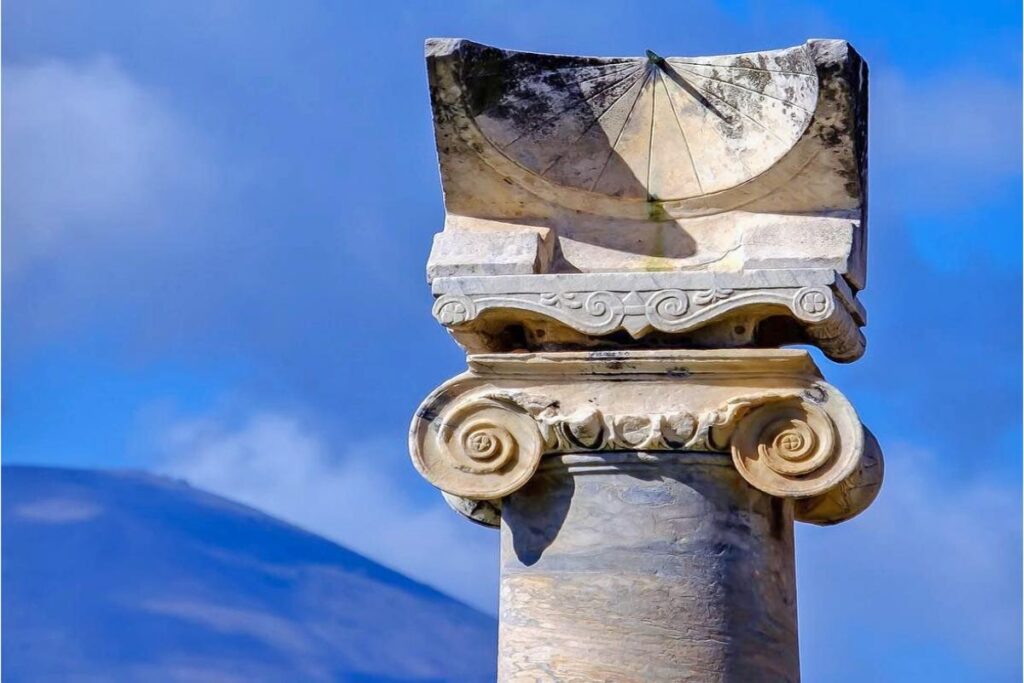
Water Clocks (1550 BCE)
Around 1550 BCE, the ancient Egyptians came up with the water clock. It was an improvement on the sundial, and it offered a more precise measurement of time. The water clock was called “Klepsydra” in Greek, meaning “water thief.”
An ancient Egyptian court official called Amenemhet is credited with its invention. Historians relied on an inscription on his tombstone, which identified him as its creator.
The water clock could be made from copper, stone, or clay. These materials are cut or moulded into a wide vessel with a hole at the bottom. The vessel would be filled with water, and the holewould be plugged in a way to allow a little drainage.
As the water drained out, there were marks on the vessel’s walls that showed what time it was. It would take exactly 12 hours for all the water to drain out of the vessel.
The water clock gained wide acceptance throughout Egypt and beyond. The ancient Greeks even merged the water clock with the sundial to produce the popular “Tower of Winds” in the city of Athens. This structure exists till today in Greece.
Initially, Egyptian priests were some of the most reliant on water clocks. They used the device to know when to perform certain rites. Later on, as it gained wider adoption, the water clock was used to schedule activities or events.
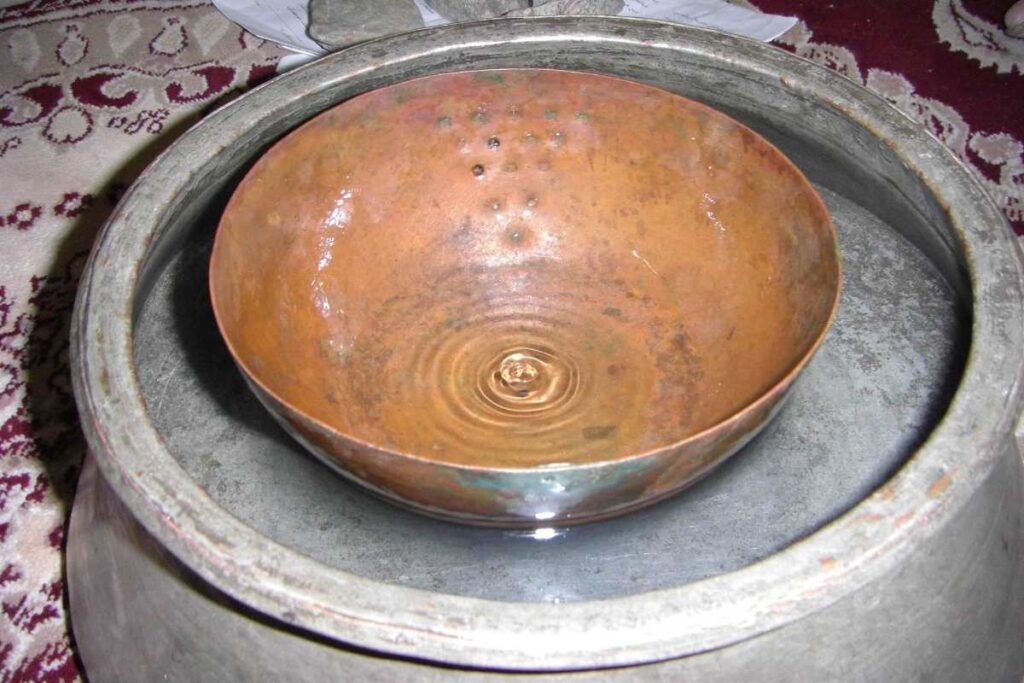
For example, they became widely used in courthouses to time speakers so no one talked for longer than they were expected to. The Romans also embraced this method of time measurement.
But as popular as they were, they weren’t very effective in colder regions of Northern Europe where the freezing weather interfered with the accuracy. Soon, the search for a more accurate method of time-telling began. Interestingly, water still played a major role in the next solution.
The Invention of the Mechanical Clock (1300s)
In the early 700 CEs, a group of Chinese monks came up with a mechanical clock that was powered by a water wheel. This clock enjoyed some modification and served the monasteries for many years. It is important to note that religion was a major driving force for the development and invention of time-telling machines and systems.
However, it wasn’t until the 13th century that we finally arrived at the first standard or weight-driven mechanical clock. These clocks were a major step from the water-powered ones. But they only had the hour dial, which was all the people needed at the time.

It was in the 15th century that more sophisticated mechanical clocks began to emerge across Europe. These ones had the minute and second dials. Although the origin of the first standard mechanical clocks is unknown, the first ones on record were pretty large and were fitted into towers to serve a large number of people.
These clocks were powered by a device called an escapement. Escapement is also the name of a mechanism in which the escapement regulates the release of energy from the springs. The escapement lets the stored energy escape at a controlled pace. The tick-tock sound from the clock is a result of the escapement mechanism at work.
The weight-driven mechanical clock consists of other components, such as the mainspring or weight, which stores and releases the energy for the movement of the other parts and the functioning of the clock. The mainspring releases energy that moves the gears and the clock’s hands.
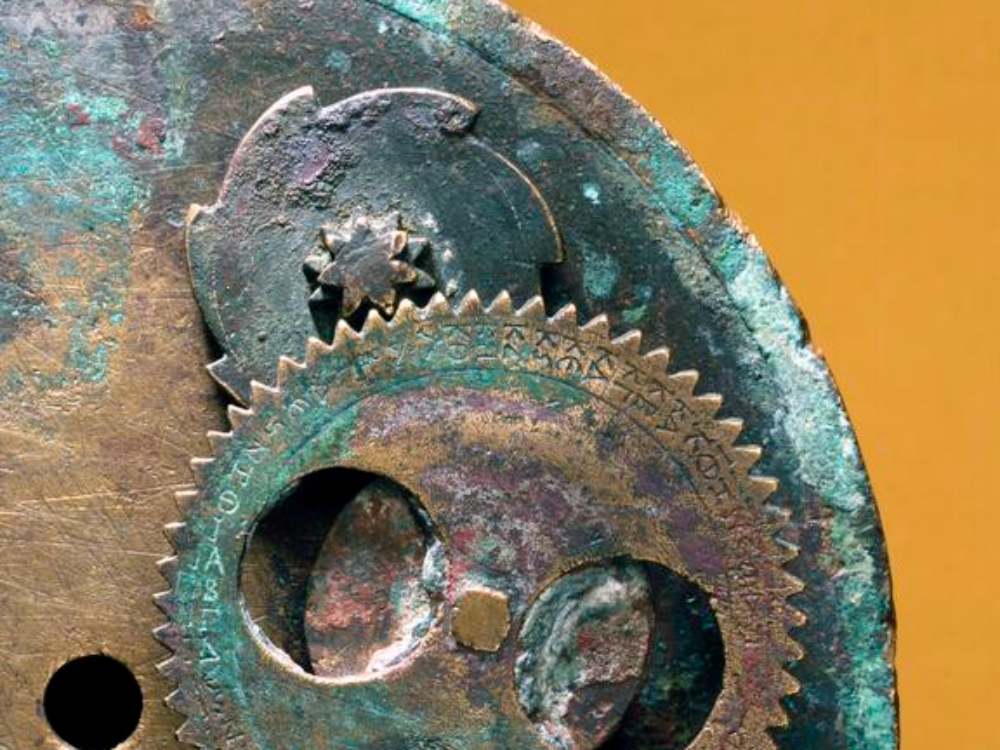
Aside from the gears, another component is the regulator, which controls the speed of the clock. Although every component has a distinct function, each one works with the others to produce the desired result.
The earliest weight-driven mechanical clock on record was the one installed at Dunstable Priory, Bedfordshire, England, in 1283. However, the oldest surviving clock in England is the one at Salisbury Cathedra,l which was installed in 1386.
There is yet another ancient mechanical clock at Rouen, France. This one was installed in 1389. Thereafter, domestic clocks began to surface. They were simply the smaller versions of these tower-mounted clocks.
Smaller Clocks (1400s)
For several centuries after the mechanical clock came on the scene, people were content with knowing the time through the large tower clocks or church clocks. Thereafter, the idea came to make these clocks more portable.
Although expensive, a few people were initially able to afford these new domestic clocks. Individuals could then have a whole clock to themselves. The less expensive versions were the larger clocks, which could be moved from one place to the other.
These portable clocks held sway during the 15th century. It was a big boost to the use of clocks. Soon, more of these domestic clocks were produced, and they became way more affordable. These smaller clocks were achieved by substituting the weight of mechanical clocks with a coiled spring.
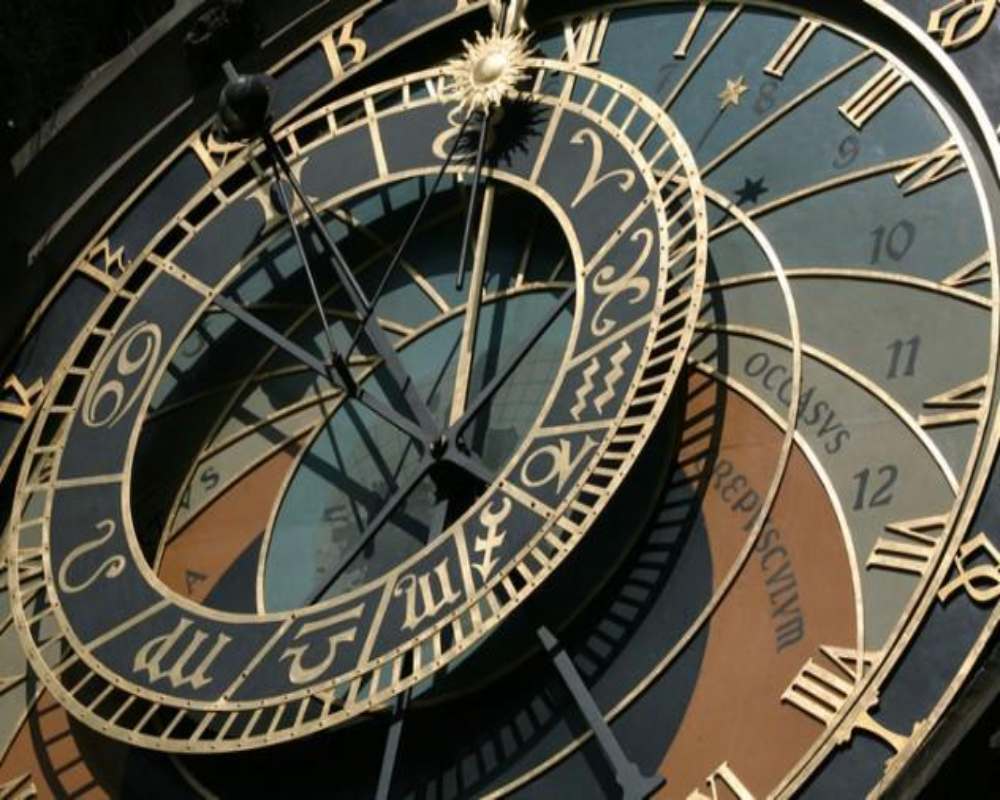
Pendulums (1500s)
On December 25, 1656, the legendary pendulum clocks were born. Christiaan Huygens, a budding Dutch astronomer and mathematician, came up with the idea following growing interest in developing a more scientific clock.
Astronomers like him were also looking to create a clock that could time the movement of stars. If this were achieved, they would come up with more accurate maps of the skies. Huygens’ invention solved this pretty well.
Instantly, the clock became a hit. Huygens entered an agreement with a maker to produce many pieces of the clocks. Renowned names such as scientists and astronomers, Galileo Galilei will then make use of the pendulum clocks to stumble upon academic breakthroughs.
Another selling point for the pendulums was their precision. They were found to be up to 100 times more accurate than the clocks that existed before them. By the 1660s, French and English workmen had started producing variations of the clock.
Huygens, however, concentrated his efforts towards improving his invention. He wanted the clock to become even more beneficial to astronomy. In his quest, he discovered an idea that could make the pendulum clock even more effective and popular. It was the spiral balance spring.
The spiral balance spring enabled the balance wheel of the clock to do a better job. Hence, it increased the accuracy of timepieces. This increased the demand for watches, which were attached to chains and worn around the neck at the time.
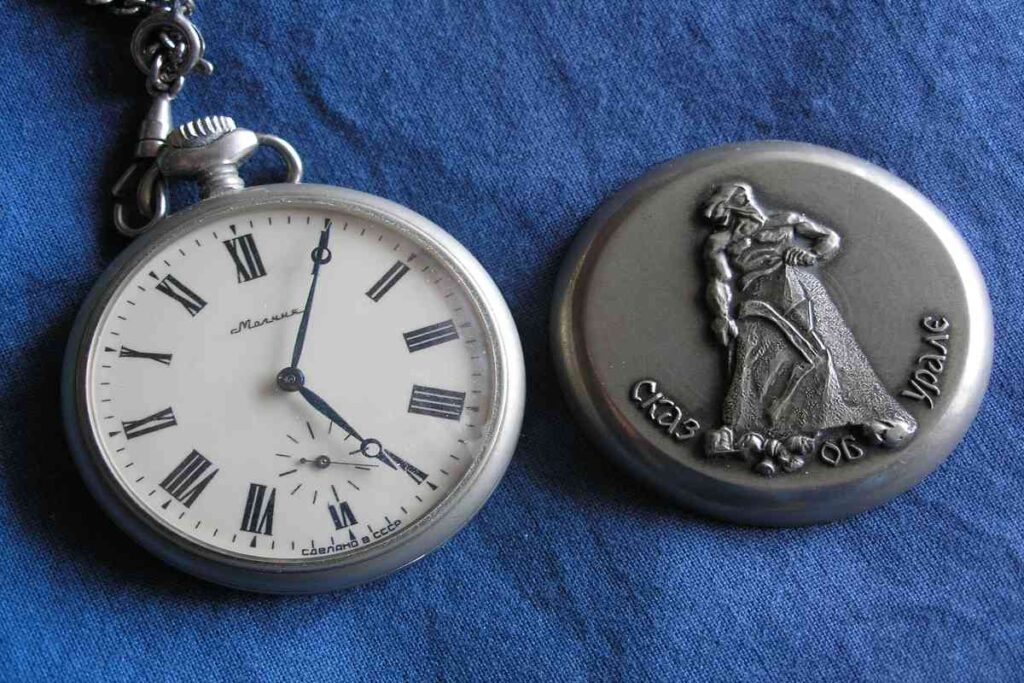
Thereafter, people began to carry these watches in their pockets. Huygens never gave up. His hard work paid off when he found another technology called the anchor escapement. This was different from and better than the verge escapement he had previously used.
Watches Were Produced in Massive Numbers By the 19th Century
At the turn of the 19th century, clock watches were still pretty scarce. That’s because they were expensive and beyond the reach of many. But two men changed all that. Two businessmen in Waterbury, Connecticut ,saw this as a golden opportunity.
They approached a clockmaker in Plymouth with a great deal. They struck an agreement with him for the production of clocks for three years. The clock producer, Eli Terry, was to make 4,000 units of long case clocks during this period. These clocks became relatively cheaper than the others.
Interestingly, along the line of fulfilling his terms of the contract, Terry privately designed a different clock. All of these led to the popular Connecticut clockmaking industry.
At the tail end of the 19th century, humans discovered the time differences in large territories. This led countries such as the United States to announce multiple time zones. By 1883, the United States had recognized four time zones within its borders.
The next year, global stakeholders met at the International Meridian Conference in the United States capital of Washington. There, they divided the world into 24 time zones. They used Greenwich, a district in Southeast London, England, as the reference point.
It was after this location that the Greenwich Mean Time (GMT) was named. Greenwich was also popular among mariners, as most of them already used the Greenwich time for navigation.
The Rise of Watches
The 19th century also saw a surge in watch production. People began to see the commercial potential in producing more watches rather than clocks.
Watch makers began to emerge, with each one competing with the others. Notably, American watch makers tried to outshine their European counterparts, who controlled most of the market. It was during this period that a Maine watchmaker, Aaron L. Dennison, hatched a plan. He met with Edward Howard, a top manager of a watch factory in Massachusetts, to discuss his ambitions.
Dennison needed the infrastructure to experiment with mass producing watches. After a year, Dennison had made more than a thousand watches. The business soon expanded and became the Boston Watch Company.
Soon, other such companies surfaced. These include the American Waltham Watch Company which thrived on the growing demand for watches during the American Civil War. But it was during World War I that the relevance of pocket watches began to fade.
People began to prefer strapping them to the wrists. During the 1920s, self-winding mechanical wristwatches came on the scene. Fast forward to the 21st century and we now have highly accurate digital watches even on electronic devices.
Timekeeping has also evolved into smartwatches and timepieces on mobile phones. If what we know about technology remains true, then we are yet to see the last of the development of time-telling. Humanity is excited to see what technology comes out with next.

